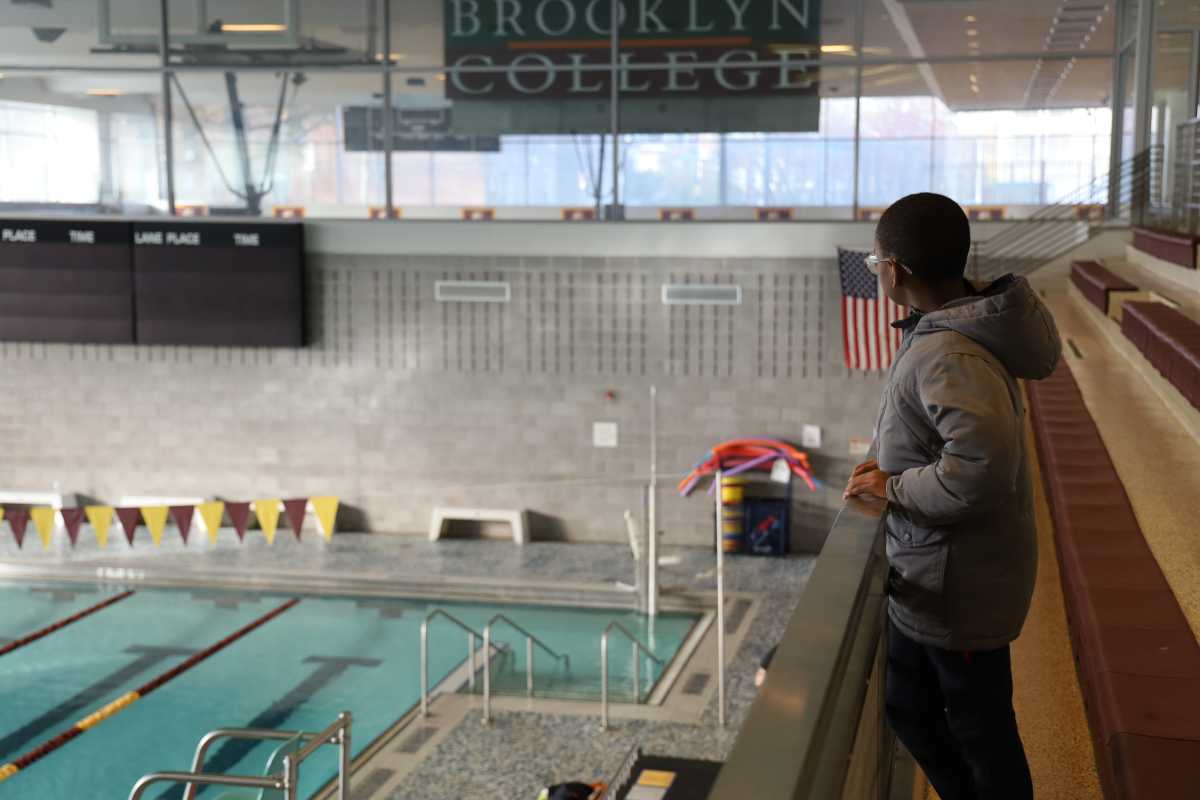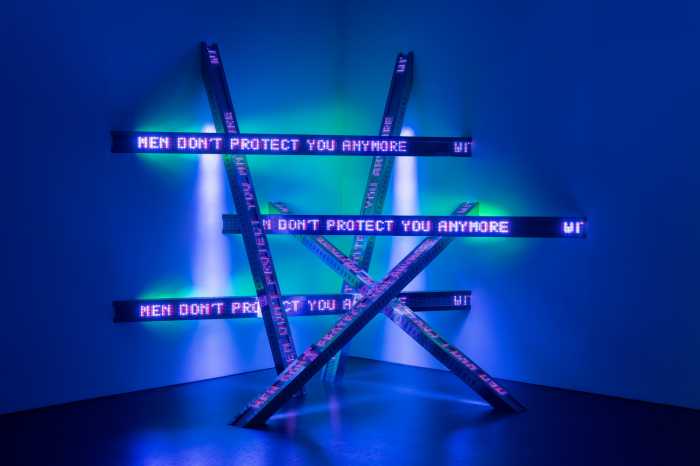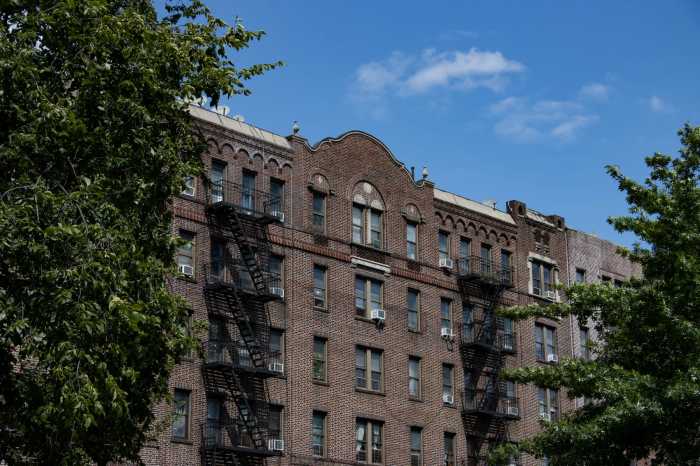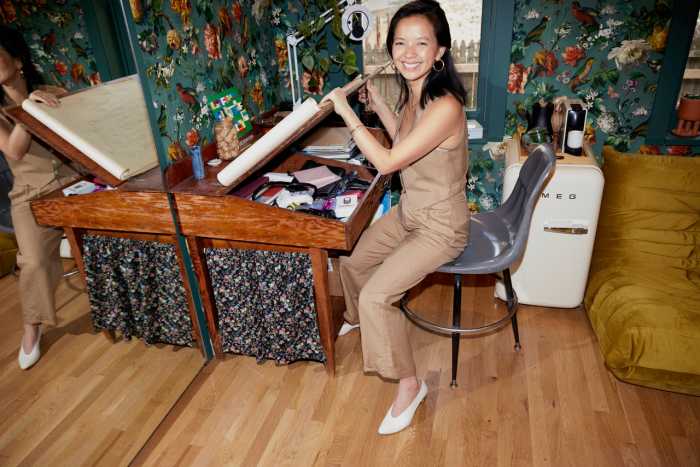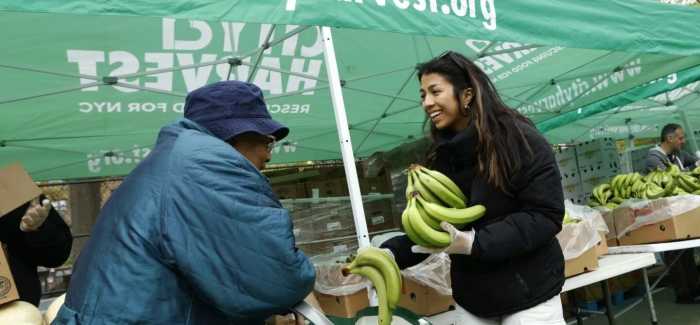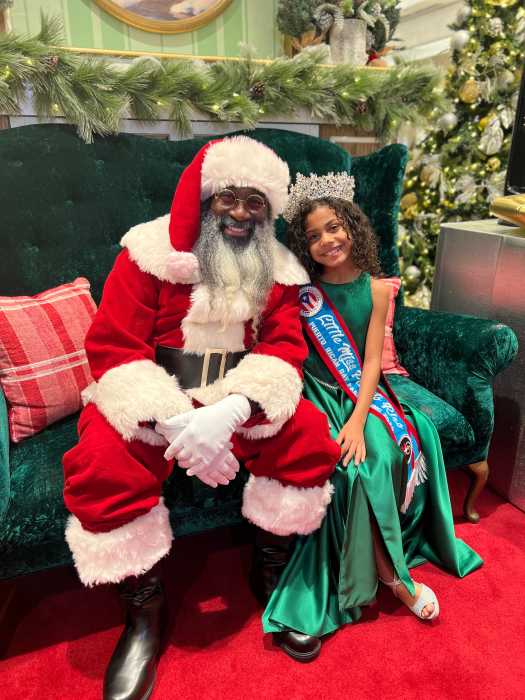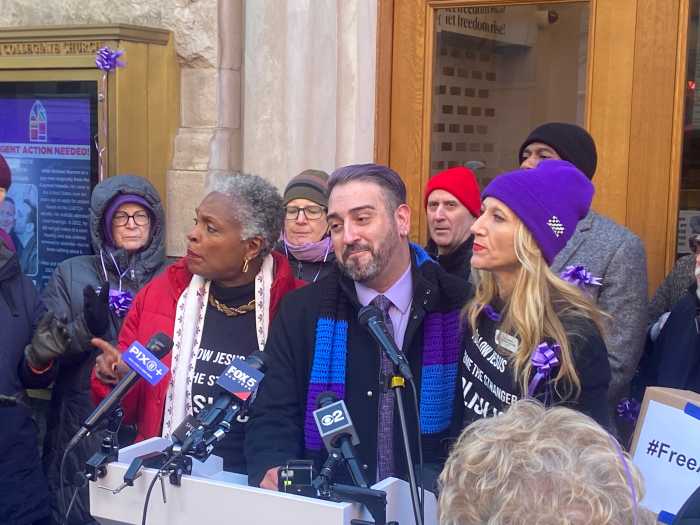Elizabeth Leacock’s son Xaire, 12, has always been drawn to the water. But when he almost drowned at age six, Leacock knew he needed swim lessons.
“At least I’d have some comfort that he’d survive on his own if he were to get himself into trouble,” she said.
However, finding affordable and accessible swim classes near her home in Flatbush turned out to be exceedingly difficult.
Brooklyn is home to 23 of New York City’s 90 public pools. But City Council District 40, which includes almost all of Flatbush and parts of neighborhoods like Crown Heights and South Slope, doesn’t have a public pool.
Seven people drowned at the city’s beaches last summer, the most since 2019. One of the victims was 16-year-old Elyjha Chandler, a rising senior at a Flatbush high school, who drowned off Jacob Riis Park along with his friend, Christian Perkins.
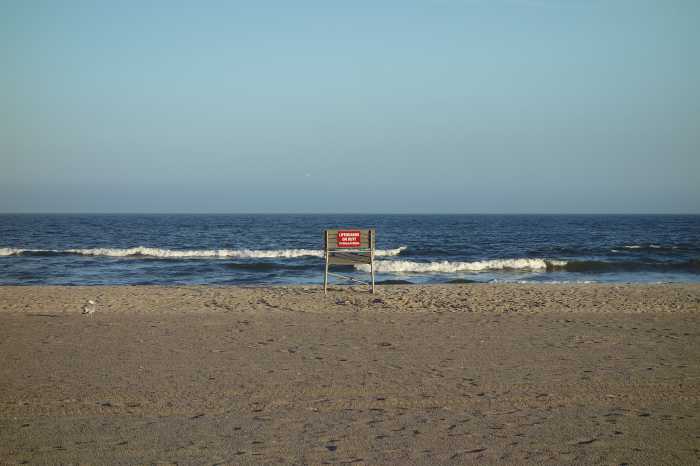
The deaths spurred calls for action from community leaders and elected officials, and the city and the state pledged their commitment to improving pool infrastructure. Last July, the Adams administration announced a $1 billion initiative to build new pools and renovate existing ones. In 2024, Gov. Kathy Hochul made a media splash by designating $12 million for a floating pool in the East River.
While Flatbush is set to receive its first public pool this fall, a deeper issue persists: many New Yorkers don’t know how to swim, and instruction remains dangerously hard to come by.
“If you look at the drowning rates, they’re going up, and we’re not actually doing anything different than we’ve done since like, 1970. In fact, we’re doing even less — and what I mean by that is we took [instruction] out of the schools,” said Kate Krause, founder and executive director of Rising Tide Effect, a Brooklyn-based water safety non-profit.
For years, City Council members have attempted to pass legislation mandating swim instruction in public schools. In 2023, a bill requiring swim classes for all second-graders was passed, but the mayor later cut it out of the budget. In March 2025, the mayor announced an additional $5.5 million in funding to expand the city’s swim programs to 18,000 students.
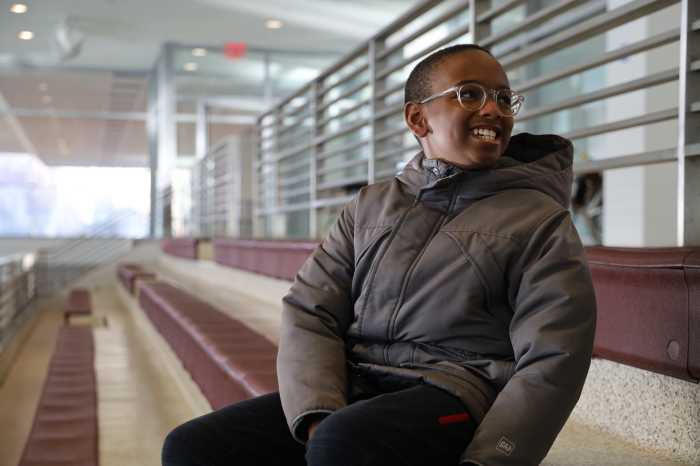
Many public schools have pools but no swim classes. The Erasmus High School campus was one of them, but will soon host swim instruction in its pool through a program named after Chandler and Perkins.
Most public pools are also not conducive to year-round swimming. Outdoor pools are open from late June to early September, and only 12 are indoors and able to host lessons after Labor Day. In Brooklyn, five out of 20 outdoor pools are “mini pools,” which are only three feet deep.
Last year, the city’s parks department taught more than 9,479 people how to swim through its “Learn to Swim” program, according to spokesperson Gregg McQueen. However, to get a spot, hopefuls must enter into a lottery, leaving many on the waitlist.
Parents like Leacock are left to search for affordable lessons for their children on their own — and it’s not easy.
“When I would Google swimming lessons, you’d get areas like Park Slope and Manhattan,” she said. “Those are too far for me — it just wouldn’t fit.”
The places that returned her calls were out of her price range, totaling as much as $3,500 for the summer. So, she turned to summer swim classes on family vacations.
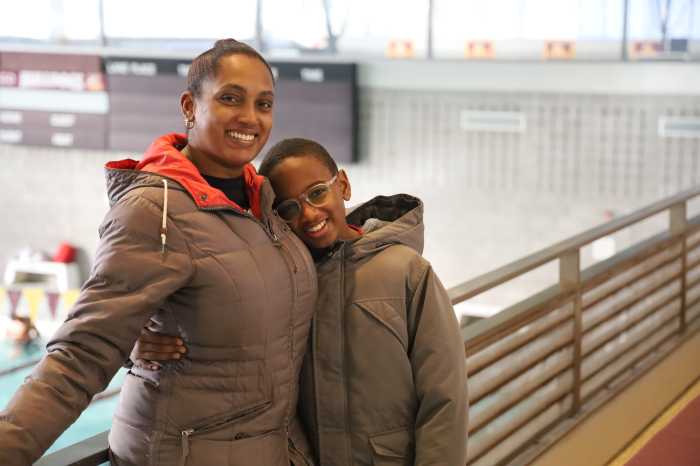
“It is tremendously expensive to have a child in swimming,” said Flatbush resident Yvonne Riley, who has put 17 children in her family through swimming lessons.
Many parents aren’t in the position to pay for lessons, Riley added.
“If they’re working to put food on the table, then swimming is not going to be their priority,” she said.
A membership at YMCA is $146 per month for a parent and their child, although financial assistance is available, and swim classes at the Crown Heights armory are $59 for a shared lesson and $178 per class.
While access to swim instruction is a citywide issue, it particularly impacts communities of color. Studies from both New York and other US cities have revealed a stark racial divide when it comes to swimming skills and access to swim instruction.
Local resident Jeanel Moril, who’s from St. Lucia, said some of her friends have pulled their kids out of swim classes due to the cost. She had to “scramble” to enroll her own son in a two-week course last summer, and struggled to find a long-term option afterwards.
Moril eventually found Inclusive Community Wellness, a non-profit run by local water safety advocate Michael Randazzo, that offers free or low-cost swim classes for children and adults out of pools at Brooklyn College and public housing in Brooklyn.

ICW’s swim classes were the first that Moril and Leacock found that fit within their budgets and schedules. Riley, who hails from Jamaica, is conquering her fear of deep water in the adult classes at ICW. Moril said Randazzo’s classes are “highly overdue and necessary,” she said, adding that the majority of participants are children of color.
Nonprofits like ICW and Rising Tide were founded to fill the access gap in swim and safety instruction citywide. However, Krause said their impact can only extend so far without more funding and mandated swim instruction.
“Nonprofits fill in the cracks where they can fill in the cracks. And this is beyond a crack — this is like a canyon,” she said.
“It’s a complex issue,” said Shawn Slevin, founder of the Swim Strong Foundation, a New York City nonprofit also teaching water safety and swim skills. Funding for pool upgrades is a good start, she said.
“It’s a drop in the bucket, but it’s the first drop in the bucket we’ve had in 70 years,” she said.
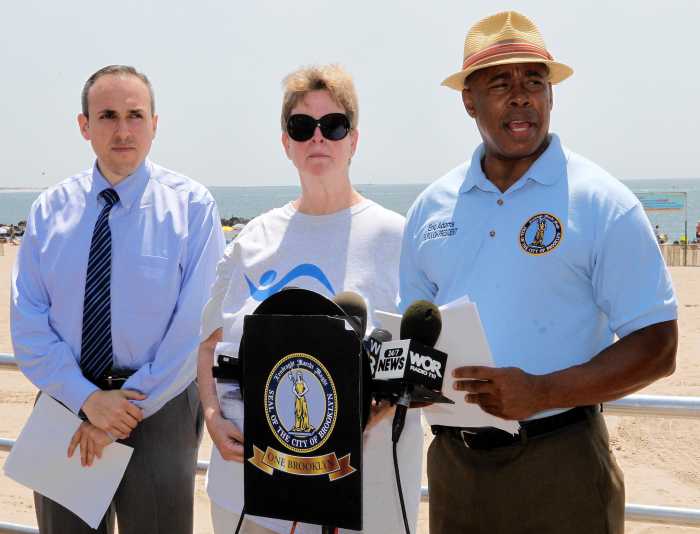
Spreading knowledge of water safety is a crucial first step in solving this issue, according to Slevin. Swim Strong has taught “situational awareness of water” to over 55,000 New Yorkers, including thousands of students. Although the curriculum doesn’t require a pool, broad buy-in from schools has been hard to obtain.
“I thought that principals would be banging my door down,” she said. “But no, it’s been a real push.”
Slevin, who’s written legislation to incorporate water safety in New York State curriculum — an effort that ultimately failed — and Krause, who sits on the state’s Temporary Commission to Prevent Child Drowning, have both been told by legislators that these efforts are “a marathon, not a sprint.”
“I don’t know why this is so hard. I really don’t,” Krause said.
Pool infrastructure efforts must prioritize year-round instruction, which is why her organization has proposed adding bubble roofs to outdoor pools, she said.
“It speaks to the lack of culture around water safety that we install splash pads and we think we’re moving the needle on water safety.” she said.
Krause and Slevin stress the need for a cultural shift around water, from one focused on recreation to a much broader perspective.
“The reality is, all of us need to think about water very differently,” Slevin said.
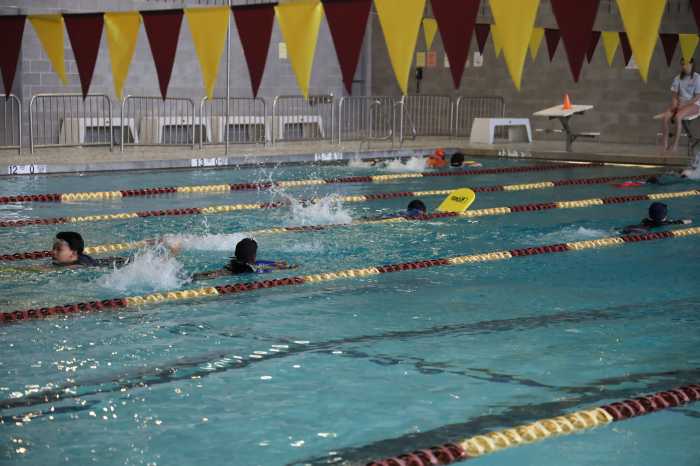
With climate change-fueled storms increasingly affecting coastal areas like New York City, even strong swimmers will be vulnerable.
“We are all facing a world with a lot more water ahead of us,” Slevin said.
This cultural shift starts with “inspiring the youth,” Krause said. “It’s youth that are typically drowning, and it’s youth that, if they learn now, could shape generations to come, because they’ll teach their children.”
Moril and Riley were both committed to not passing on their fear of water. Moril wanted her son to break the cycle of “deep-water phobia” that she and much of her family share, hers stemming from almost drowning at 12.
“I always tell my son, ‘what I don’t know, you’re going to know, what I didn’t do, you’re going to do – because I don’t want you to have regrets.”
Correction 6/18/25: This story previously misspelled Kate Krause’s last name. We regret the error.


